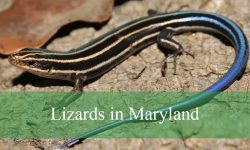On the vast plains of Oklahoma, spiders thrive with remarkable agility and diversity. From tiny brown spiders blending into the grass to large species adorned with unique colors, they all constitute a part of this land’s special ecosystem.
The diminutive spiders often conceal themselves within beehives or beneath rocks. They are skilled hunters, typically preying on small insects or beetles without posing any threat to humans.
However, not all spider species are as small and harmless. Giant spiders inhabit Oklahoma, such as the shimmering black orb-weavers, crafting an iconic image of this region. While they often keep their distance from humans, their presence still elicits excitement and curiosity among local residents.
With such richness in spider species and their mystical aura, Oklahoma is not just an ideal habitat for humans but also a unique ecosystem for spiders.
Different Types of Spiders in Oklahoma
American Nursery Web Spider
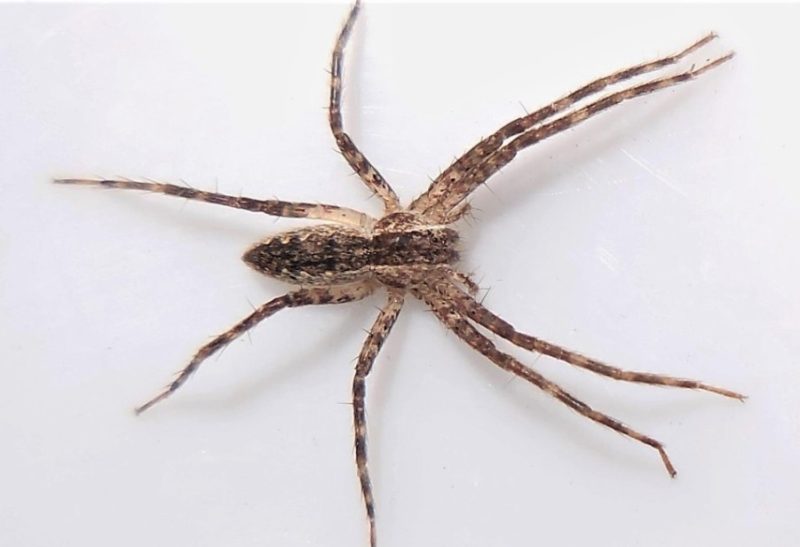
The American Nursery Web Spider (Pisaurina mira) features a long abdomen and high carapace protecting the cephalothorax, with eight eyes arranged in two rows. Males boast longer legs than females, sporting a dark banded abdomen with rows of spots.
The name stems from the female’s meticulous care for her eggs and spiderlings, protecting them in sacs and standing guard. Wandering hunters eschew webs, favoring vegetation and water edges in wooded areas and meadows, particularly tall grass, bushes, and shrubs.
Habronattus Coecatus

Habronattus Coecatus is a jumping spider from the Salticidae family, the largest spider family in the United States. Featuring large forward-facing median eyes, they are skilled ambush predators, relying on their exceptional jumping abilities rather than webs to capture prey.
Active during the day, they inhabit various habitats. When ambushing prey, they deploy a single line of silk, minimizing the risk of escape.
Bronze Jumping Spider
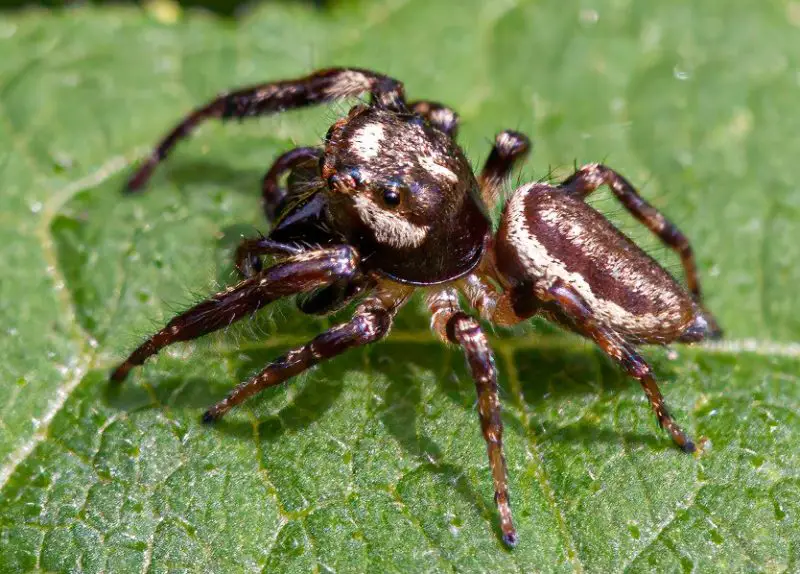
Bronze Jumping Spider (Eris militaris), also known as the bronze jumper or bronze lake jumper, exhibits distinct markings between genders. Males feature a dark cephalothorax with white banding, while the abdomen is lighter with white markings.
Females have a lighter cephalothorax and a darker abdomen, lacking lateral banding but adorned with white spots. Growing up to 8mm for females and 6.7mm for males, they’re curious and may jump onto hands but only bite when provoked, with minimal pain lasting seconds.
Striped Lynx Spider
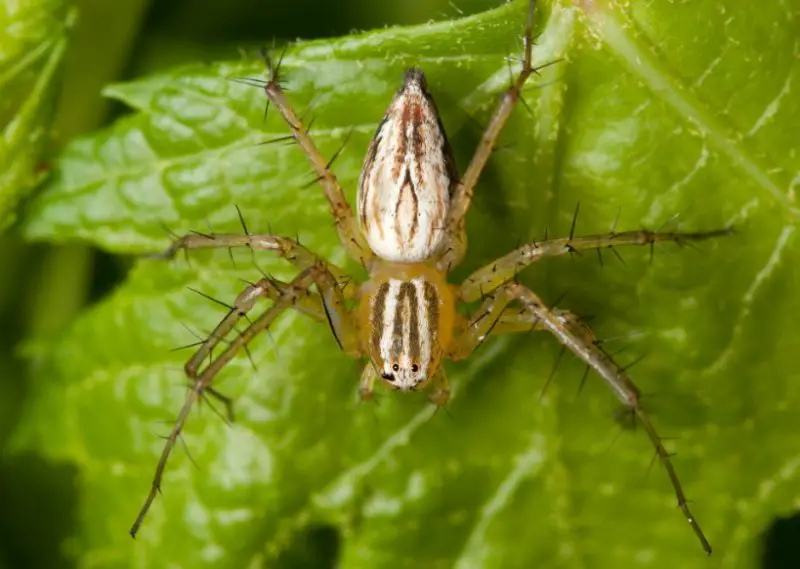
Striped Lynx Spider (Oxyopes salticus), known for its varying colors from brown to cream or orange, features females with distinct stripes on their carapace and abdomen, including a prominent diamond mark. Females reach 6mm, while males are slightly smaller at 5mm.
As ambush predators, they utilize webs primarily as retreats for hiding, feeding, and laying eggs, rather than for capturing prey.
Putnam’s Jumping Spider
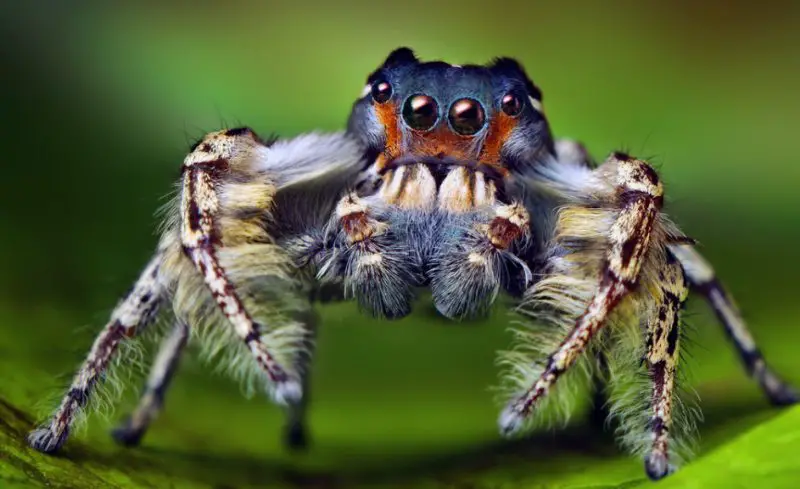
Putnam’s Jumping Spider (Phidippus putnami) of the Salticidae family boasts impressive jumping abilities, capable of leaping over four times its body length. Covered in hair with distinctive black tufts above the eyes and on the sides of the head, they rely on excellent vision for ambushing prey.
Using a single line of silk to immobilize prey, they deliver a paralyzing bite before dragging it to their web for consumption. Encountered in diverse habitats, they occasionally venture indoors, but pose no threat to humans.
Common Hentz Jumping Spider

The Common Hentz Jumping Spider (Hentzia palmarum), part of the Salticidae family, is known for its impressive jumping abilities relative to its small size. These spiders pounce on prey, using their strong red front legs to inject venom, paralyzing their catch. Sporting large eyes surrounded by orange hairs, they boast excellent vision.
With brown to red cephalothoraxes and abdomens adorned with dark bands and white mottling, they’re often found in leaf litter or occasionally indoors, seeking their next meal. While not harmful, they may bite if provoked, causing temporary discomfort.
Spined Micrathena
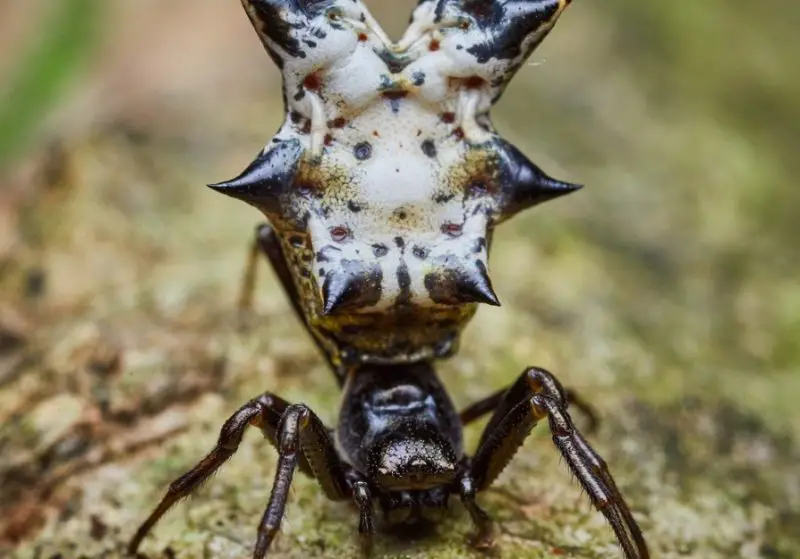
The Spined Micrathena (Micrathena gracilis), also known as the castleback orbweaver, is a member of the orb weaver family. Constructing large webs up to two feet in diameter, these spiders feature small bodies, reaching 10.8mm in length. Harmless to humans, they sport black and white bodies adorned with spikes and sometimes yellow markings on their sides.
Most active in late summer and early fall, they’re diurnal creatures, with females boasting bulb-shaped abdomens with prominent spines, while males are smaller, lighter in color, and possess fewer spines on flatter abdomens.
Grayish Jumping Spider
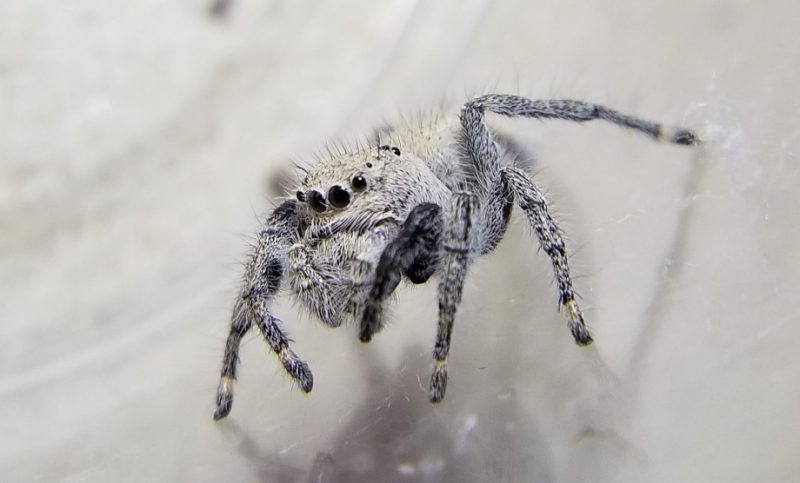
The Grayish Jumping Spider (Phidippus princeps) is part of the extensive Salticidae family, known for their remarkable jumping abilities. These spiders utilize webs primarily as retreats for safety and mating purposes. While not inherently dangerous, their bites can cause pain, though manageable with an ice pack to reduce swelling.
Despite their ability to deliver a painful nip, they’re generally harmless to humans and play a valuable role in controlling insect populations.
High Eyelashed Jumping Spider
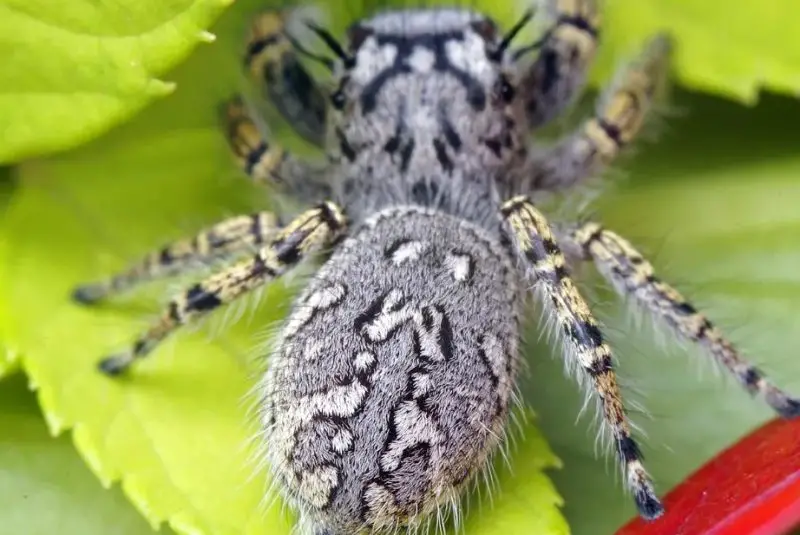
The High Eyelashed Jumping Spider (Phidippus mystaceus) is a common sight in Oklahoma, with females reaching 1cm in body length, while males are notably smaller. Functioning as ambush predators, they eschew web-spinning in favor of hunting.
While they are primarily outdoor dwellers, they may venture indoors in search of food. Possessing keen curiosity and excellent eyesight, they typically only bite when provoked, causing brief pain.
Orchard Orbweaver
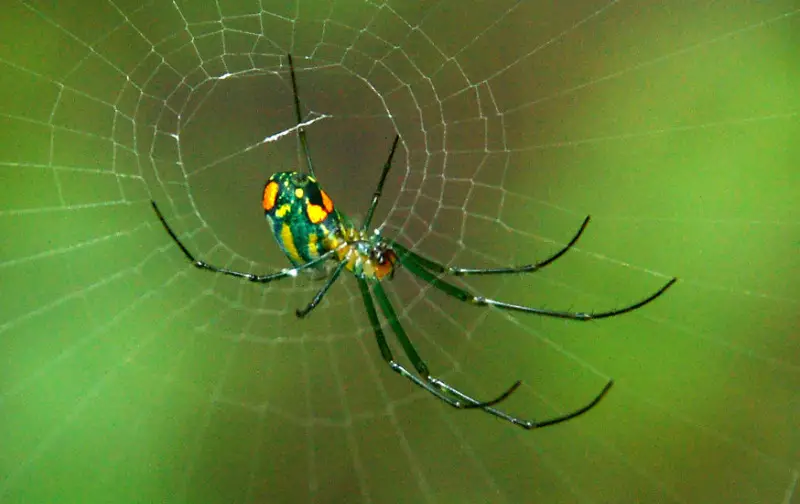
The Orchard Orbweaver (Leucauge venusta) spins a distinctive horizontal web, suspending itself upside down in the center. Sporting leaf-green legs and sides ranging from dark green to orange/green, its underside features yellow and black spots, while the abdomen displays silver with black and brown streaks.
The rear may have varying-sized yellow, red, or orange spots. Unfortunately, wasps lay their larvae on these spiders, which eventually feed on them.
Grass Spiders
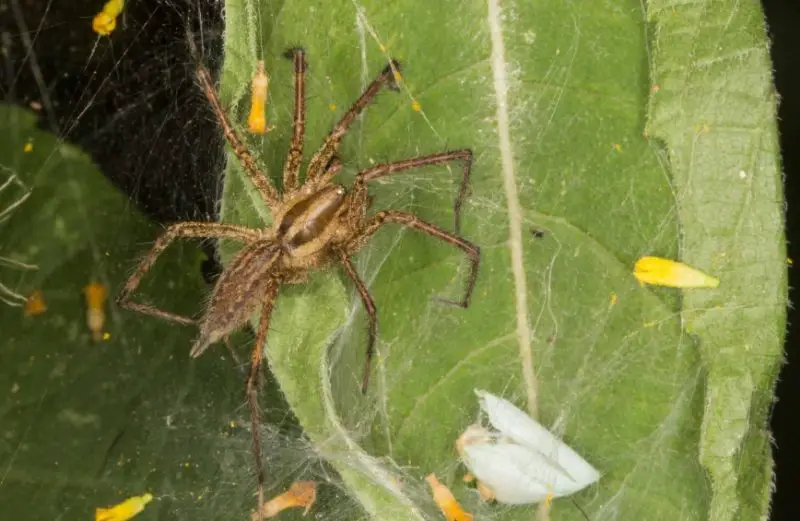
Grass spiders (Genus Agelenopsis), also known as American grass spiders, belong to the funnel weaver family and were first described in 1869. They construct sheet webs with a funnel for shelter, but these webs are non-sticky.
Growing up to 19mm, they feature eight eyes arranged in three rows, with distinct leg banding and two dark bands on the sides of their cephalothorax.
Cardinal Jumping Spider
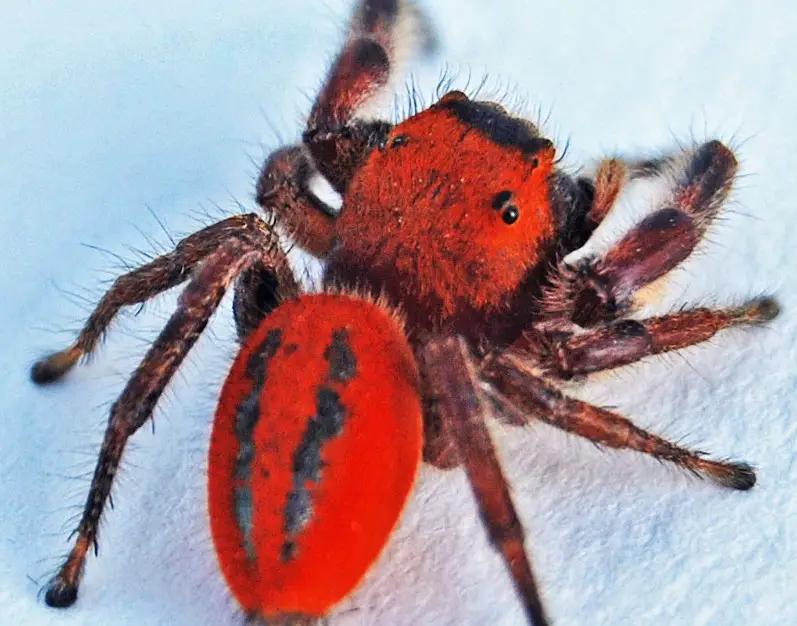
The Cardinal Jumping Spider (Phidippus cardinalis), also known as the cardinal jumper, is easily distinguished by its vibrant red or orange cephalothorax and abdomen. Darker legs adorned with black hairs and tufted abdomens further characterize them.
Often referred to as velvet ants due to their appearance, these small spiders have oval carapaces, with females typically larger than males. While their bites can be painful, they pose no significant harm to humans.
Furrow Orbweaver
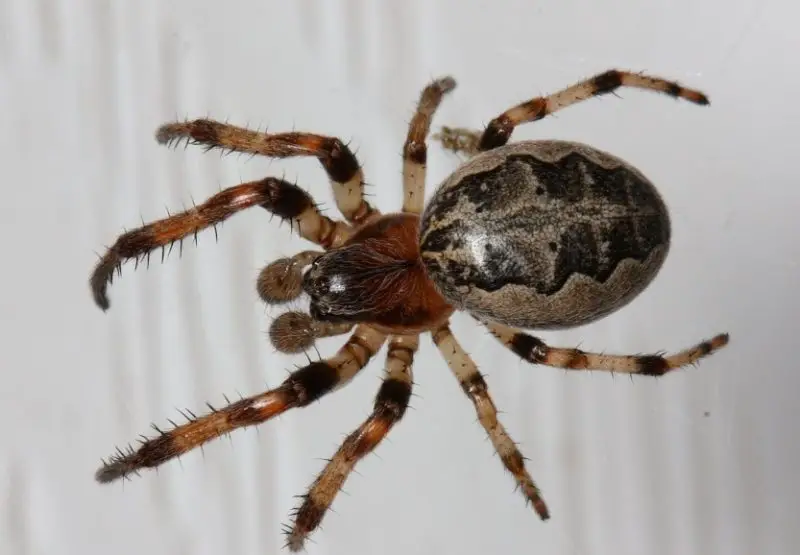
The Furrow Orbweaver (Larinioides cornutus), also called the furrow spider or furrow orb spider, showcases a distinct appearance, with females reaching 14mm and males slightly smaller at 9mm. Sporting a large bulb-shaped abdomen, they come in shades from red to gray or black, often with arrow-like markings on their carapace and legs.
These spiders are commonly found in moist areas near water sources, where they build webs in low shrubs and grass, hidden during the day and remade nightly.
Triangulate Combfoot

The Triangulate Combfoot (Steatoda triangulosa), or triangulate cobweb spider, is about 6mm in length with a brown to orange cephalothorax and yellow legs. Their bulb-shaped cream abdomen displays purple to brown zigzag lines.
Found in homes, they spin webs in dark corners and windows, preying on insects like brown recluse spiders, fire ants, ticks, and pillbugs. Despite poor eyesight, they sense prey through vibrations. While they are not aggressive, their bites may trigger allergic reactions.
Banded Garden Spider
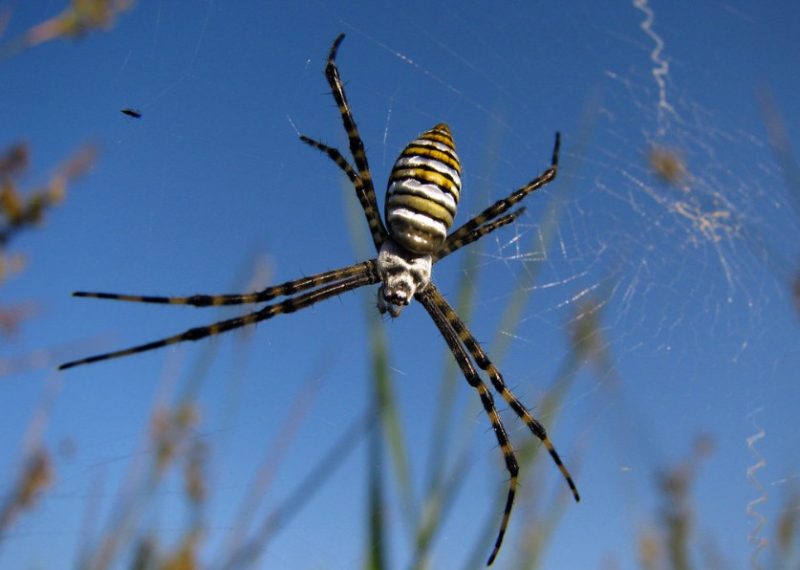
The Banded Garden Spider (Argiope trifasciata), also known as the banded orb-weaving spider, is a native of North America, commonly spotted from early September to late October. Their impressive webs, up to two feet in diameter and sometimes reaching two meters in length, adorn bushes and stems.
Females, larger than males, sit upside down at the center of their webs, while males typically stay nearby. The silk decorations on their webs serve as warning signals to potential predators, making the spider appear larger than it is.
Hammer-Jawed Jumping Spider
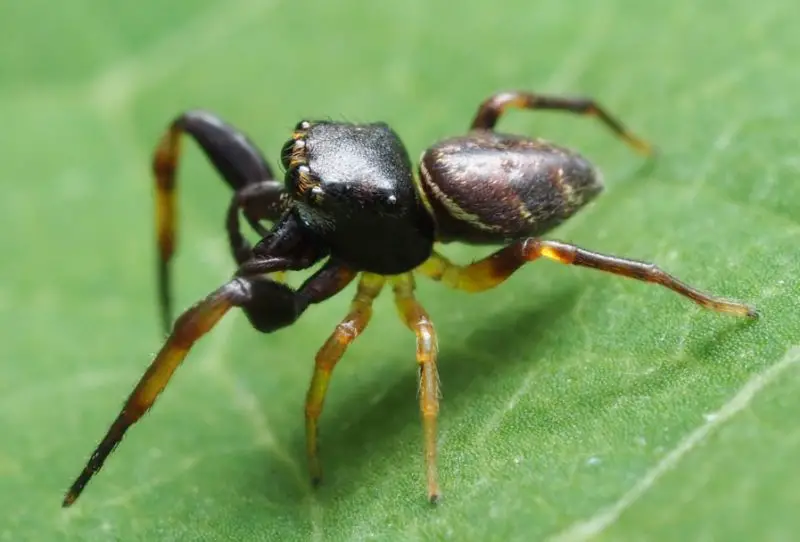
The Hammer-Jawed Jumping Spider (Zygoballus rufipes), also known as the hammerjawed jumper, features females reaching 6mm, while males are smaller at 4mm. Found across Oklahoma, they often venture indoors in search of prey.
These ambush predators can leap more than four times their body length, aiding in both hunting and evading predators. While their bites can be painful, they’re not medically significant and typically subside quickly.
Boreal Paradise Spider
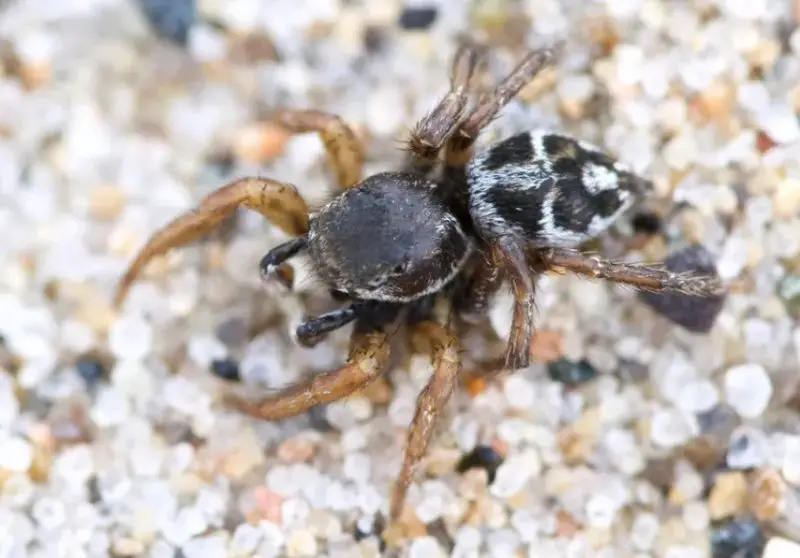
The Boreal Paradise Spider (Habronattus borealis), a member of the Salticidae family, is a proficient jumper, capable of leaping more than four times its body length. Utilizing this skill for ambushing prey and evading threats, they’re adept at avoiding curious humans.
While they do spin webs, these are primarily used as retreats for privacy, feeding, and egg-laying. As ambush predators, they swiftly capture prey by leaping and deploying a single line of silk to prevent escape, before delivering venom and dragging their catch back to the web.
Sylvan Jumping Spider
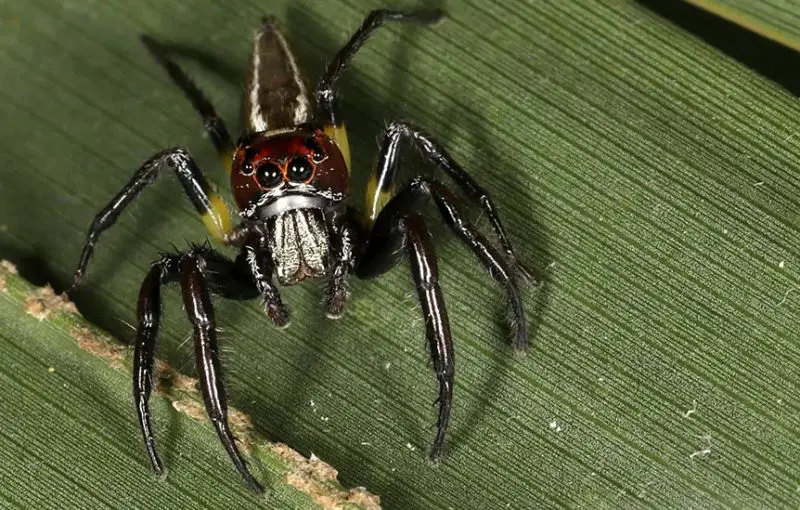
The Sylvan Jumping Spider (Colonus sylvanus) is a petite member of the Salticidae family, with females larger than males and typically brown in color. Found in tree habitats and among plants, they reproduce during spring and summer.
Growing up to 7mm, they employ their remarkable jumping prowess to ambush prey, which they drag back to their webs for consumption at their leisure. Often spotted on flower petals, they hang upside down, poised to pounce on passing prey and prevent escape.
Common House Spider
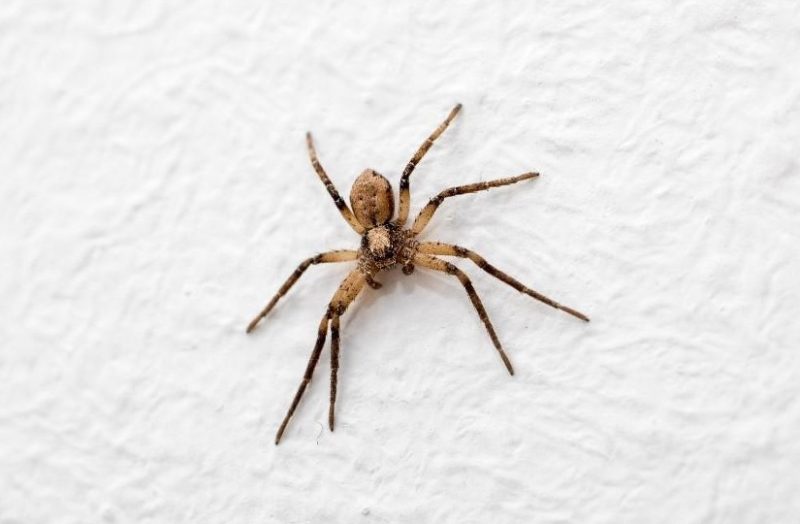
The Common House Spider (Parasteatoda tepidariorum), also called the American house spider, is a frequent resident in homes, adept at catching insects in its messy cobwebs. Belonging to the Parasteatoda family, they rely on vibrations in their webs to detect prey.
Typically black or tan, females can reach 0.24 inches (6mm) and males 0.19 inches (4.7mm) in body length. Non-aggressive, they usually feign death when threatened but will bite if squeezed, though their neurotoxic venom poses little danger to humans.
White-Banded Crab Spider
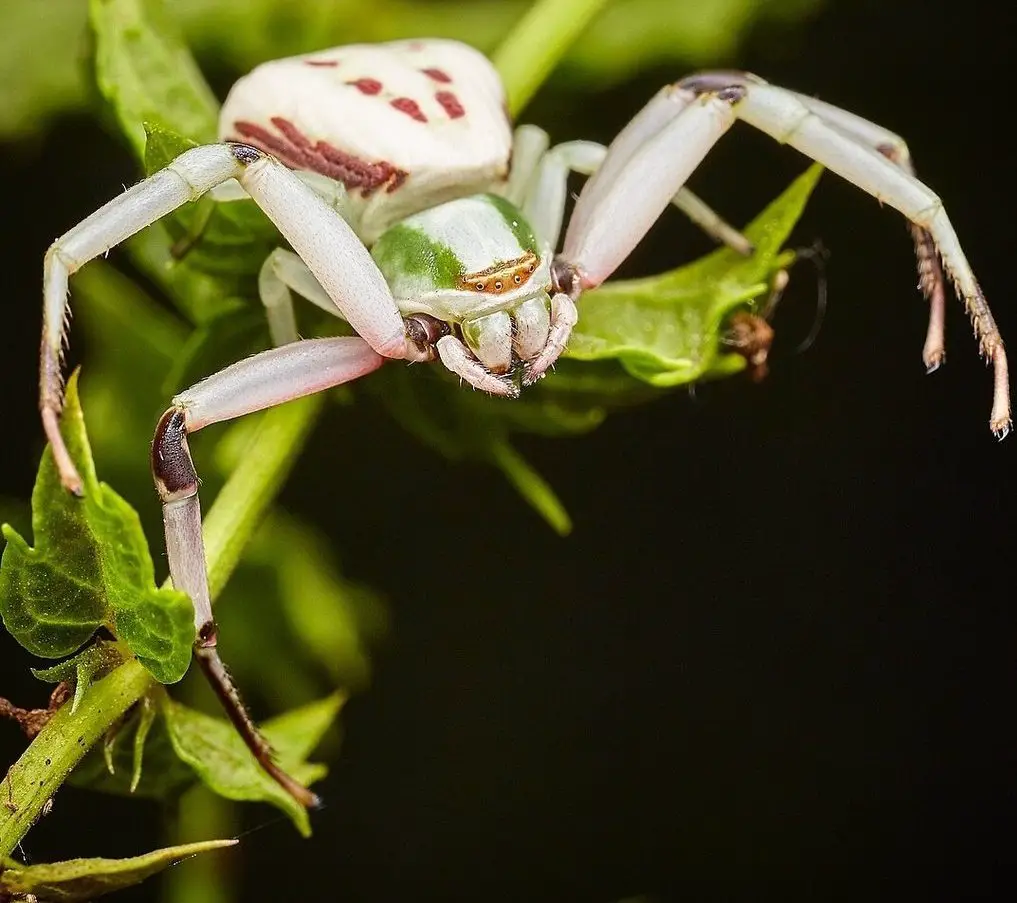
The White Banded Crab Spider (Misumenoides formosipes), part of the Thomisidae family, boasts a distinctive white band crossing the plane of its eyes. Positioned as sit-and-wait predators, they lurk on flowers, preying on pollinators. Equipped with robust front legs, they ambush prey, often larger than themselves.
Females exhibit color variation, shifting from yellow to white based on their surroundings, while males maintain a consistent appearance with darkened front legs and a golden abdomen.
Bold Jumping Spider
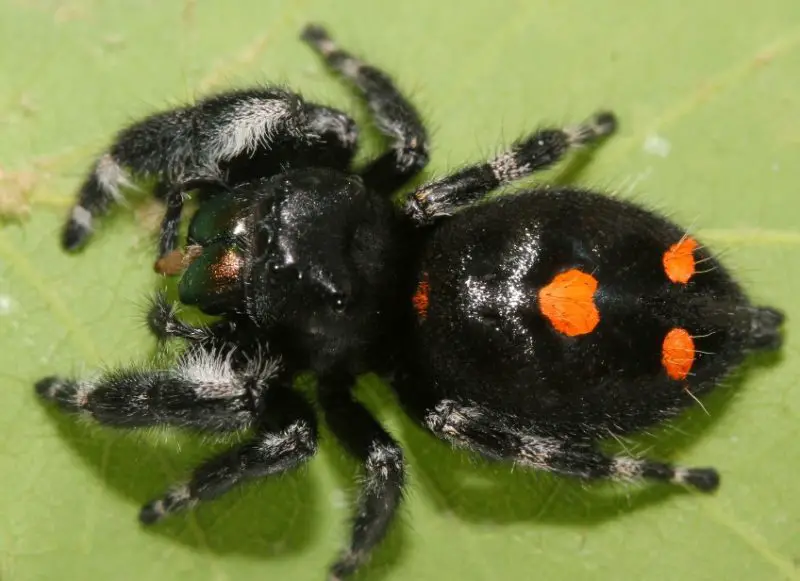
Bold Jumping Spider(Phidippus audax), commonly called the daring jumping spider, is prevalent in Oklahoma. Males reach up to 15mm, while females grow to 18mm. These black spiders have distinctive spots and stripes, with juveniles sporting orange spots that turn white as they mature.
Some adults may have orange, red, or yellow spots. With bright green or blue mouths, they excel at stalking prey in open areas, including grasslands, gardens, and fences.
Yellow Garden Spider
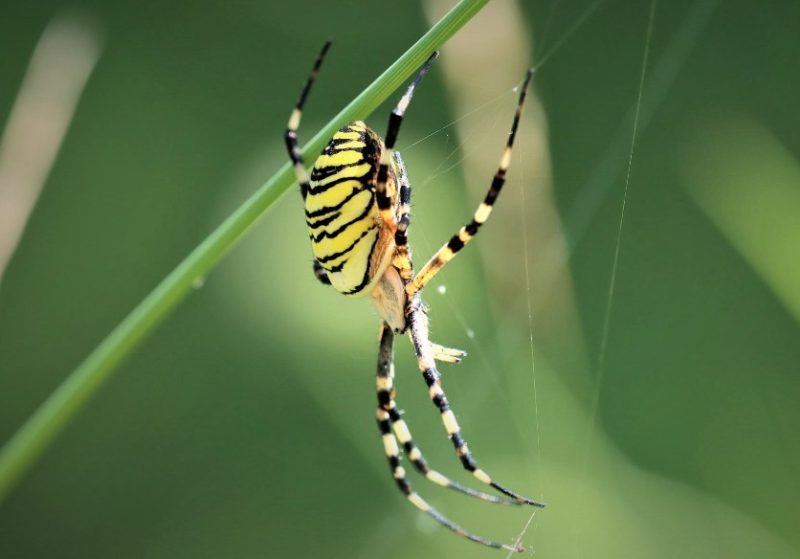
Yellow Garden Spider (Argiope aurantia), also known as the black and yellow garden spider, was first described in 1833. Males reach up to 9mm, while females grow to 28mm. They have yellow and black abdomens and white cephalothoraxes.
Harmless but will bite if harassed, these spiders build large, circular webs with zigzag patterns near sunny fields, outbuildings, and tall vegetation.
Tan Jumping Spider
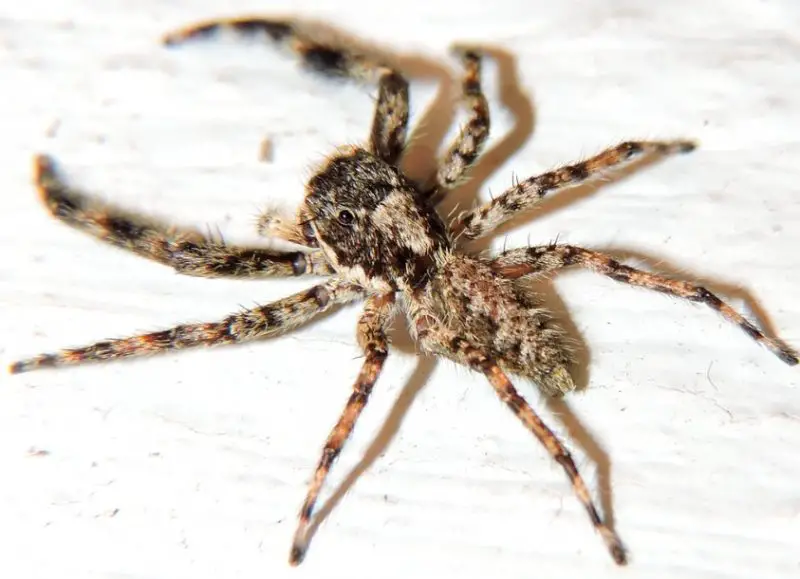
Tan Jumping Spider (Platycryptus undatus) has a compressed body to hide under tree bark. Females grow to 13mm, males to 9.5mm. With a prominent abdominal pattern for camouflage, they prefer vertical surfaces like walls and fences.
Curious and seldom fleeing, they might climb with a gentle hand. Though they rarely bite, if pinched, a mild bite can be treated with soap, water, and ice.
Texas Brown Tarantula
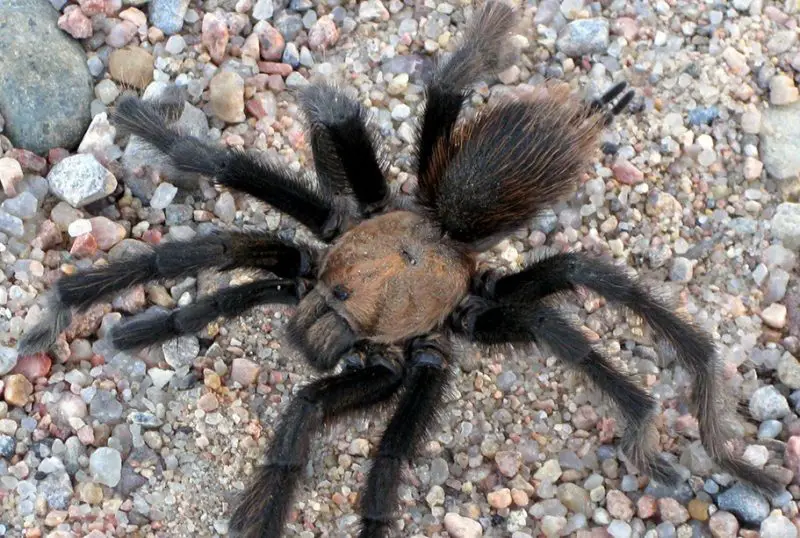
Texas Brown Tarantula (Aphonopelma hentzi), also called the Oklahoma brown tarantula, is common in the area. Their leg span can exceed 10cm, with varying dark brown bodies. Docile but defensive if disturbed, they have urticating hairs on the abdomen that cause irritation when kicked off.
Their large fangs can cause significant punctures if they bite. They are found mostly in grasslands and hide in underground burrows with webbed entrances.
Spotted Orbweaver
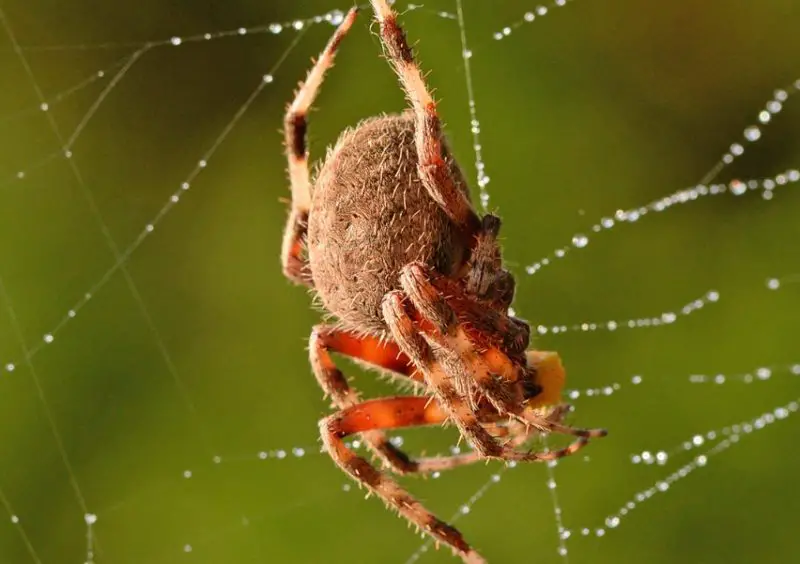
Spotted Orbweaver (Neoscona crucifera), also known as Hentz orbweaver or barn spider, builds large, orb-shaped webs up to two feet in diameter. Varying in color from orange and red to yellow, brown, or tan, they feature bristles on their legs, head, thorax, and abdomen.
Active from May to August, they are nocturnal and found in woodlands, gardens, parks, fields, and backyards.
Rabid Wolf Spider
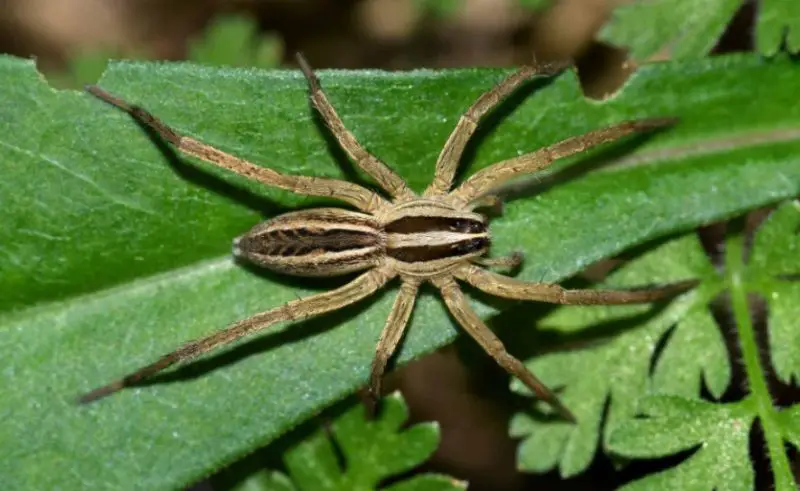
Rabid Wolf Spider (Rabidosa rabida) features two dark stripes on its cephalothorax and one on its abdomen, with the rest of the body being yellow. Females grow up to an inch, males to half an inch. They have eight eyes, with larger, reflective ones visible under light.
Preferring wooded areas and cotton fields, they live in holes or debris-covered burrows. Nocturnal ambush hunters, they bite if provoked but are not dangerous.
Brown Recluse
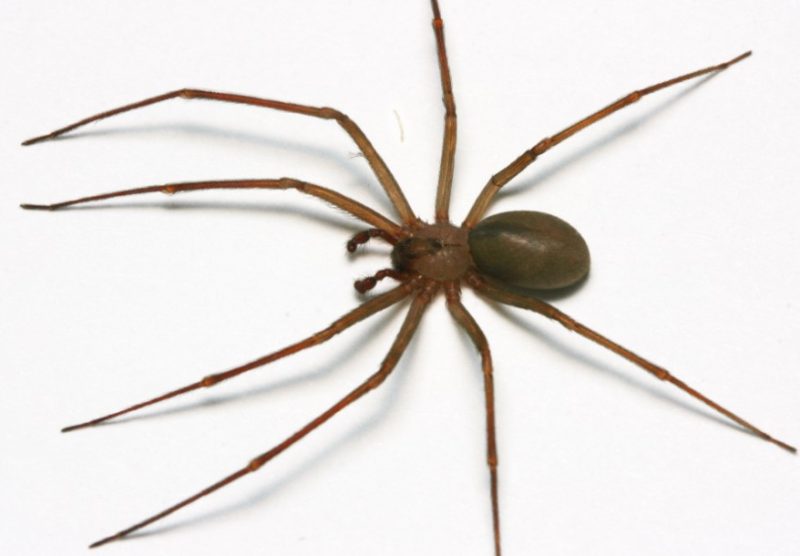
Brown Recluse (Loxosceles reclusa), also known as fiddleback spider or violin spider, can grow up to 20mm in body length. They are light brown to black/gray with a violin-shaped marking on the cephalothorax. Unique among spiders, they have six eyes arranged in pairs. Preferring woodpiles, closets, cellars, and sheds, they hunt at night.
Though bites are rare, they can cause severe reactions, including skin necrosis, especially in children and the elderly.
Southern Black Widow

Southern Black Widow (Latrodectus mactans), also known as the black widow or shoe-button spider, is the most dangerous spider in Oklahoma. Females reach 13mm, with shiny black bodies and a red hourglass marking on their abdomen. Males are smaller at 6mm. Gravid females can have an abdomen over 1.25cm in diameter.
Only mature females can harm humans, but despite around two thousand bites a year, no deaths have been reported. Seek immediate medical attention if you are bitten.
Green Lynx Spider

Green Lynx Spider (Peucetia viridans) females grow to 22mm, with males half that size. They feature a red patch between their eyes, red body spots, and white-haired eyes. The abdomen has six forward-facing chevrons. Legs are green to yellow with black spines.
In spring, they change from green to pale yellow with red streaks. Gravid females adapt their color to their habitat. Though rare, bites are painful with localized swelling. They help manage pests in cotton fields.
Dimorphic Jumping Spider
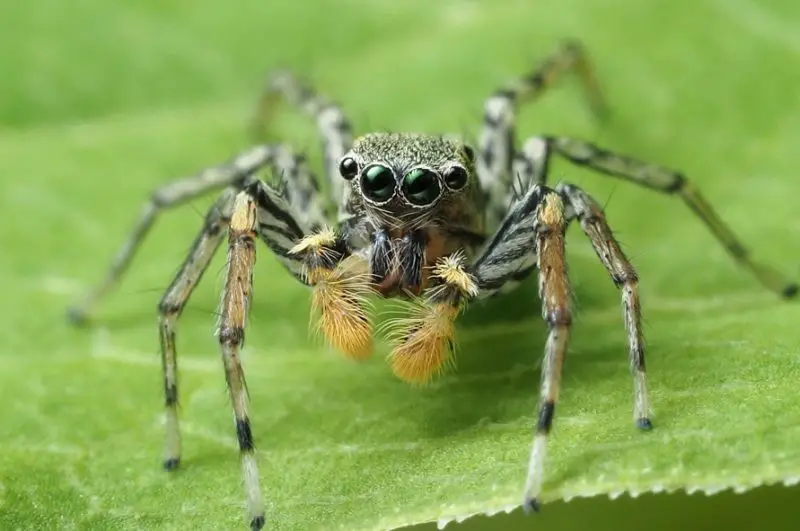
Dimorphic Jumping Spider (Maevia inclemens) earns its name from the distinct appearance of males and females within the same species. Males sport black bodies with yellow legs or tan bodies with red abdomens, while females resemble tan males but with short hairs covering their bodies.
They utilize their jumping ability to ambush prey, capturing it with a single thread of silk to prevent escape.
Flea Jumping Spider

Flea Jumping Spider (Naphrys pulex), a member of the Salticidae family, possesses remarkable intelligence and vision, capable of leaping over four times its body length. Identified by its gray and black mottled appearance on the abdomen, cephalothorax, and legs, with orange markings on the cephalothorax sides.
Growing up to 10mm, they fearlessly capture prey larger than themselves, such as crickets and cockroaches. Though their bites can be painful, their venom is harmless to humans, causing only mild discomfort.
Peppered Jumping Spider

Peppered Jumping Spider (Pelegrina galathea) are petite gray spiders, with females reaching 5.4mm and males 4.4mm in body length. Females sport a peppered appearance with dark and light spots, while males are bronze brown with white patterns on their abdomen and cephalothorax.
Notably, males have two white markings behind their median eyes, giving them a perpetually frowning expression. They are found in prairies, fields, and crops and play a vital role in pest control.
Golden Jumping Spider
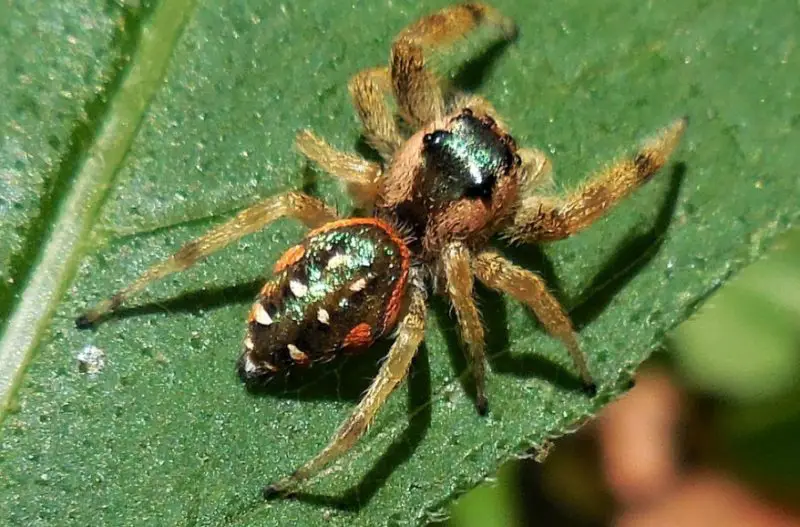
Golden Jumping Spider (Paraphidippus aurantius), also called the emerald jumping spider, is known for its solitary hunting behavior and remarkable jumping abilities. Sporting green or black bodies with white stripes and bordering on the abdomen, they have mid-line hairs with white dots and lines.
Females feature brown with orange details, both exhibiting metallic green coloration. They are not aggressive towards humans; they may bite if provoked, akin to a bee sting. They often retreat into cracks and corners when approached too closely.
Brilliant Jumping Spider
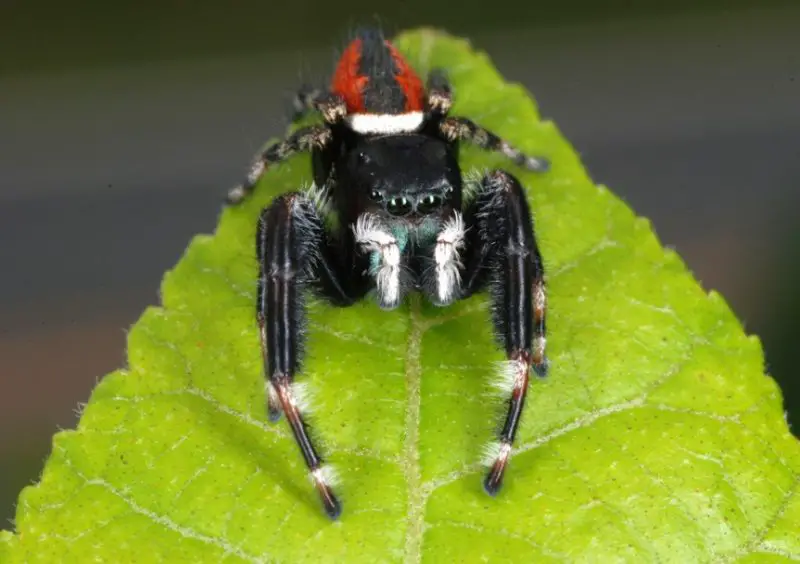
Brilliant Jumping Spider (Phidippus clarus), a member of the Salticidae family, frequents old fields where it sits atop plants upside down, waiting to detect passing prey. Once spotted, it swiftly jumps down to capture its meal. Larger than typical jumping spiders, females reach 4mm, males 3.2mm.
They exhibit a range of colors, from red to brown, sometimes with dark markings. As agile hunters, they boldly tackle prey much larger than themselves.





